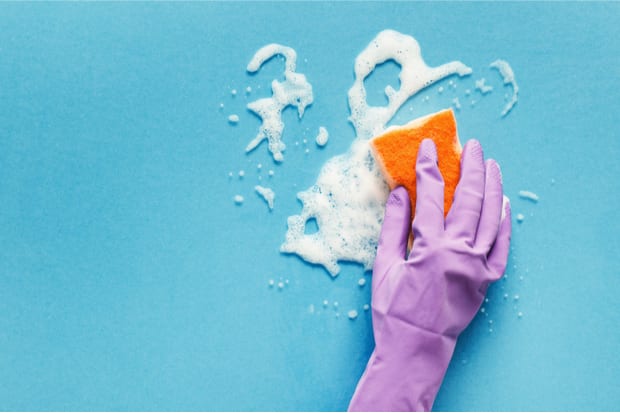
In the last several years, awareness of harmful pathogens in public places has grown significantly. The frequency of incidents where people have become infected because of inadequate and often inexistent sanitization solutions is growing at an alarming rate. From food spoiled with E. Coli in restaurants and markets, to locker rooms contaminated with antibiotic resistant bacteria (e.g. MRSA), it is now evident more than ever there is no comprehensive solution that can tackle these problems in an adequate way. Innovative and smart methods are therefore a necessity.
Resorting to harsh and toxic chemicals for the elimination of harmful pathogens may appear the simplest approach, but unfortunately and more often than desired, the choice of inappropriate chemicals for a specific type of bacteria and their under (or over) dosage can result in bluntly ineffective sanitization strategies that can endanger people by exposing them to harmful pathogens.
Some commonly used sanitizers are part of the quaternary amine compounds family, or QACs. Often used in the food industry and recently more frequently in the treatment of hard surfaces in public spaces, QACs are often preferred over chlorine (hypochlorite) because of the lack of a strong smell, as it is usually the case with bleach. However, QACs are relatively ineffective against many gram-negative bacteria, which is a class of bacteria that includes E. Coli, Salmonella, and Legionella, and requires a much higher dosage – four to 10 times – than what is prescribed by the manufacturers for an effective antimicrobial treatment.
The antimicrobial mechanism of non-oxidant sanitizing compounds in general involves the disruption of the membrane structure of the bacterium. Many cellular functions targeted by antimicrobial chemicals are most active when cells multiply and, as a result, bacteria reproduction mechanism is interrupted. However, bacteria can evolve quite fast and develop ways to circumvent these disruptions and continue cell separation despite the interference. This causes resistance.
There have been observations of alarming increases of microbial resistance to QACs as well as to chemicals present in common antibacterial soaps. These chemicals can force bacteria to evolve and develop a resistance, resulting in severely inefficient treatment methods. The USDA has already pointed out these issues recommending washing hands using plain soap and water instead. Even more alarming is the evidence that some antibacterial chemicals, such as triclosan, found in some soaps can even induce resistance to antibiotics as well.
Unknowingly, methods already in place may exacerbate the problem even further. Currently, there is no comprehensive solution that incorporates typical chemical sanitizers. But newer and smarter solutions are available now that can provide a superior protection throughout the facility. Bacteria cannot develop a resistance to ozonated water because ozone is an extremely potent sanitizer: compared to bleach, ozone is five to 12 times more potent against Poliovirus, 73 times more effective against Giardia cyst, and even 2,750 times faster against Mycobacterium. Not even chlorine-resistant microbes like cryptosporidium can survive an ozonated water treatment.
These should be very important considerations to justify overhauling the entire sanitization strategy in high-trafficked/high-contact areas of your facility.
Dr. Ceres is the director of innovation at Advanced Diamond Technologies. He can be reached at info@thindiamond.com, or visit thindiamond.com/diamond-ozone-technology.










